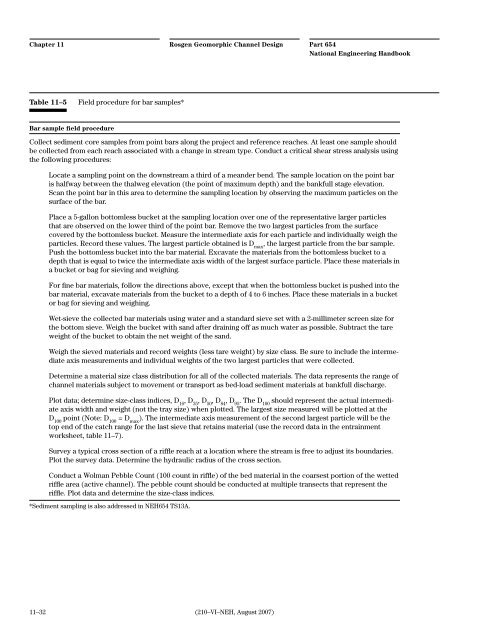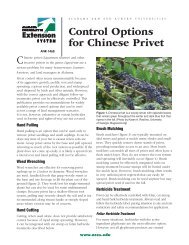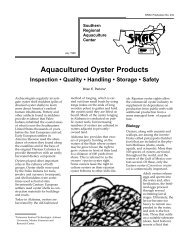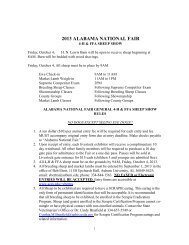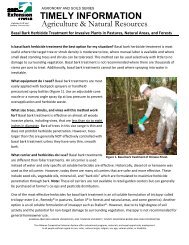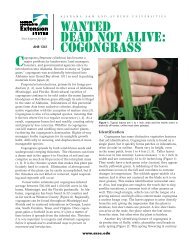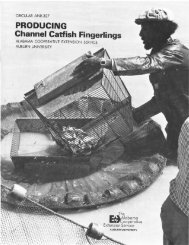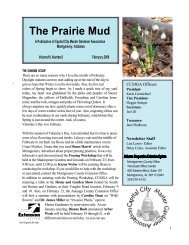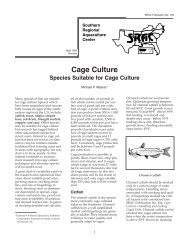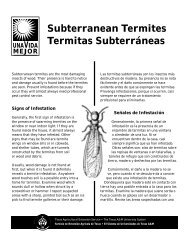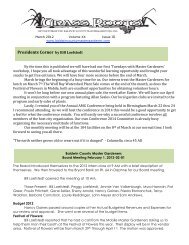Chapter 11--Rosgen Geomorphic Channel Design
Chapter 11--Rosgen Geomorphic Channel Design
Chapter 11--Rosgen Geomorphic Channel Design
Create successful ePaper yourself
Turn your PDF publications into a flip-book with our unique Google optimized e-Paper software.
<strong>Chapter</strong> <strong>11</strong><br />
Table <strong>11</strong>–5 Field procedure for bar samples*<br />
Bar sample field procedure<br />
<strong>Rosgen</strong> <strong>Geomorphic</strong> <strong>Channel</strong> <strong>Design</strong><br />
<strong>11</strong>–32 (210–VI–NEH, August 2007)<br />
Part 654<br />
National Engineering Handbook<br />
Collect sediment core samples from point bars along the project and reference reaches. At least one sample should<br />
be collected from each reach associated with a change in stream type. Conduct a critical shear stress analysis using<br />
the following procedures:<br />
Locate a sampling point on the downstream a third of a meander bend. The sample location on the point bar<br />
is halfway between the thalweg elevation (the point of maximum depth) and the bankfull stage elevation.<br />
Scan the point bar in this area to determine the sampling location by observing the maximum particles on the<br />
surface of the bar.<br />
Place a 5-gallon bottomless bucket at the sampling location over one of the representative larger particles<br />
that are observed on the lower third of the point bar. Remove the two largest particles from the surface<br />
covered by the bottomless bucket. Measure the intermediate axis for each particle and individually weigh the<br />
particles. Record these values. The largest particle obtained is D max , the largest particle from the bar sample.<br />
Push the bottomless bucket into the bar material. Excavate the materials from the bottomless bucket to a<br />
depth that is equal to twice the intermediate axis width of the largest surface particle. Place these materials in<br />
a bucket or bag for sieving and weighing.<br />
For fine bar materials, follow the directions above, except that when the bottomless bucket is pushed into the<br />
bar material, excavate materials from the bucket to a depth of 4 to 6 inches. Place these materials in a bucket<br />
or bag for sieving and weighing.<br />
Wet-sieve the collected bar materials using water and a standard sieve set with a 2-millimeter screen size for<br />
the bottom sieve. Weigh the bucket with sand after draining off as much water as possible. Subtract the tare<br />
weight of the bucket to obtain the net weight of the sand.<br />
Weigh the sieved materials and record weights (less tare weight) by size class. Be sure to include the intermediate<br />
axis measurements and individual weights of the two largest particles that were collected.<br />
Determine a material size class distribution for all of the collected materials. The data represents the range of<br />
channel materials subject to movement or transport as bed-load sediment materials at bankfull discharge.<br />
Plot data; determine size-class indices, D 16 , D 35 , D 50 , D 84 , D 95 . The D 100 should represent the actual intermediate<br />
axis width and weight (not the tray size) when plotted. The largest size measured will be plotted at the<br />
D 100 point (Note: D 100 = D max ). The intermediate axis measurement of the second largest particle will be the<br />
top end of the catch range for the last sieve that retains material (use the record data in the entrainment<br />
worksheet, table <strong>11</strong>–7).<br />
Survey a typical cross section of a riffle reach at a location where the stream is free to adjust its boundaries.<br />
Plot the survey data. Determine the hydraulic radius of the cross section.<br />
Conduct a Wolman Pebble Count (100 count in riffle) of the bed material in the coarsest portion of the wetted<br />
riffle area (active channel). The pebble count should be conducted at multiple transects that represent the<br />
riffle. Plot data and determine the size-class indices.<br />
*Sediment sampling is also addressed in NEH654 TS13A.


